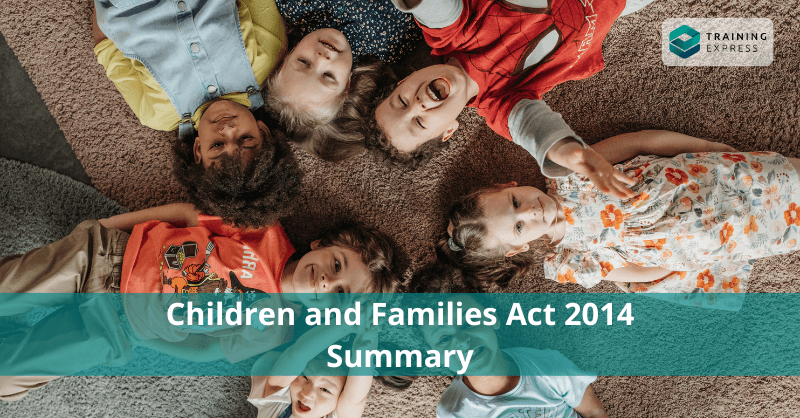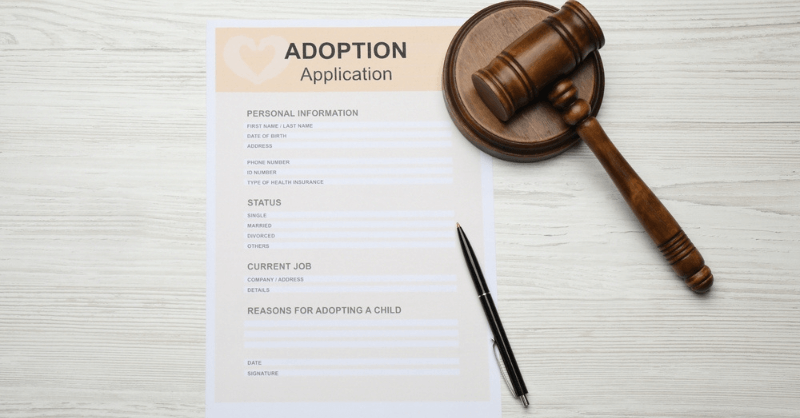

Every child deserves care and the promise of a bright future. And the word vulnerability should not go with children. That’s why the Children and Families Act 2014 protects every child from vulnerability to ensure their bright future.
Sadly, sometimes we overlook the rights and services a vulnerable child deserves without proper knowledge. So let’s find out different aspects of the Children and Families Act 2014. This blog will present how the Children and Families Act 2014 affects our vulnerable children and families.
From this blog, you will learn:
What is the Children and Families Act 2014?
The Children and Families Act 2014 is a landmark law in the UK for vulnerable children and families. The Children and Families Act 2014 is a safeguard for individuals under 18. Their right and safety are at significant risk because of inadequate care and legal protection.

Key Points from The Children and Families Act 2014
The Act covers many aspects regarding the interest and welfare of vulnerable children and families. Some of the key points from the Children and Families Act 2014 are –
- Rights to personal budgets and EHC plans;
- Family involvement;
- Needs assessment;
- Free food facilities from school;
- Flexible work facility for parents or employees;
- Support to schools for children with medical conditions;
- Shorter adoption process time frame to reduce hassle for families and children.
Why was The Children and Families Act 2014 Introduced?
The Act was introduced to support vulnerable children and young people with special educational needs and disabilities. Children now have new rights and fair procedures. The judicial system must give them pepper attention and care.
The Act brought several changes to legislation around services for vulnerable children and families. And it guarantees every child’s success & safety regardless of their colour, history, and background. The Act also helps parents and employees to apply for flexible working hours.
Why Should You Know About The Children and Families Act 2014?
The Children and Families Act 2014 significantly impacts the lives of many children and families. It affects the care, legal services and education children and young people receive. But, as individuals or oragnisations working with children, if we don’t know the rights a child deserves, we are overlooking our responsibilities.

In addition, it can determine how family separation happens, how those in care exit and navigate the system, what support is provided to children and families, and how their interest is taken care of by the central government. We should all give importance to our children’s interests, especially vulnerable ones. They deserve a better life and a better future.
You can check Child Care and Family Laws courses to get in-depth knowledge. These courses will also help you to stay one step ahead in the relevant job field.
The Ten Important Parts of the Children and Families Act 2014
The Children and Families Act 2014 covers many aspects of family, children and their rights, and legal services. Here we will discuss ten essential parts of the Children and Families act 2014.
The 10 important parts of the Children and Families Act 2014 are as follows –
Part 1: Adoption and Contract
The contract process of adoption in the UK was never easy. Many children remain in inadequate care and education. The Children and Families Act 2014 brought many changes in the adoption process so that it would be faster, more families would be interested in adoption, and children could get good care.

Some of the critical points of the Act are:
How does this Affect Your Work?
Suppose you are a social worker, lawyer or local government employee. And you are working specially for children, families, and adoptive parents during the adoption process. In that case, you should know these regulations very well.
Part 2: Family Justice
This part mainly considers significant aspects of how courts worked about family justice. Some key points of the Act are:

How does this Affect Your Work?
This provision comes with children’s best interests at the heart of decision-making. When working with children, you must be aware of the time frame and other court orders regarding “child arrangements order, control of expert evidence, and assessments, in children proceedings, care, supervision and further family proceedings etc.
Part 3: Children and Young People in England with Special Educational Needs and Disabilities
The system has raised the profile of pupils with SEND. Moreover, it has raised awareness of involvement within the school system. As a result, the Act introduced several changes to local authorities engaging young people and children with SEND.
The Act suggests the local government should pay attention to the wishes and feelings of children with disabilities or who need special attention and care. It will help to get the best educational outcomes.
Also, young people with SEND have the right to special education provision. The local authority is responsible for managing that. For their release, Health care provisions & Social Care provisions also need to be made.

The requirement on local authorities to promote the integration of training/educational provision with health care provision has led to working practices. It is applicable to children/parents and health professionals alike.
Local authorities should involve children and families in their education and care decisions and provide them additional support and mediation services. And local services should be available to children and families in a clear and easy-to-read manner.
How does this Affect Your Work?
If you work for local government or child care agencies, you should know these provisions for children with special educational needs and disabilities. And, if you disobey these rules and regulations, you might face legal consequences.
Related Article: SEND Code of Practice: Guidance for the People Aged 0 to 25
Part 4: Childcare Act
The Act allows schools and other providers to set up childminding agencies to increase the provision of childcare after school hours. Along with this, it enables the Commissioners and Customs to incur expenditure in preparing to introduce a scheme for assisting with childcare costs. The Act registered and established childminder agencies.
Furthermore, it provides childminders with necessary business advice and training to increase the quality of childcare and provision across the country.
How does this Affect Your Work?
As a child care agency worker, you now have more flexibility in your work. Moreover, as a teacher, you have more flexibility in offering childcare to your students. If you work at customs or as a commissioner, you are allowed for the ‘Childcare costs scheme: initial expenditure’.
Part 5: Welfare of Children
This provision of the Children and Families Act 2014 covers some well-being and health elements for children. Under the Act, local authorities are suggested to try and identify young carers. Moreover, the Act gives children in care a choice to stay with their foster families until they turn 21.
According to the act, tobacco packaging should not be appealing to young people, and a new crime to buy tobacco products from anyone under 18. It’s also a crime to smoke in a car where children are present. Other elements of the part are:

How does this Affect Your Work?
As a local authority, teacher or tobacco businessman, you should be aware of these regulations. Otherwise, you might face legal consequences. For example, at work or in public, you can’t smoke in front of children. You should prioritise the young’s health issues. As a tobacco businessman, you can’t design or package products targeting young people.
Lorem ipsum dolor sit amet, consectetur adipiscing elit. Ut elit tellus, luctus nec ullamcorper mattis, pulvinar dapibus leo.
Part 6 – The Children's Commissioner
The Children’s Commissioner’s primary task is to protect and promote the views and interests as well as the rights of children who live away from home, who leave care, and who are in social care services.
The children’s commissioner is also responsible for the provision of information, advisory board, business plan and advising the children in the discharge process. The Act strengthened the power of the children’s commissioner.
How does this Affect Your Work?
As a Children’s Commissioner or if you work with children or as adoptive parents, you should know the roles of a Children’s Commissioner. If you are a Children Commissioner, you must promote children’s rights, views and interests in policies or decisions affecting their lives. In addition, you should represent vulnerable children who find it difficult to express their opinions.
Part 7- Statutory Rights to Leave and Pay
The Children and Families Act 2014 changed some regulations of parental leave in the UK. Some important aspects of shared parental leave (SPL) are:
- The Secretary of State may make provisions for parental leave under different situations. For example, parents can share 50 weeks of leave and 37 weeks of paid leave.
- Parents should take the shared parental leave within the first year of adoption or birth. Adopting parents also have the right to apply for a break from work.

How does this Affect Your Work?
If you want to adopt a baby or have a baby, now you have the right to take unpaid or paid holidays (up to 37 weeks). Also, you can take time off from work for up to 50 weeks and share that with the other parent.
Besides, if you are a human resource manager, you must know the rules of shared parental leave to grant takeoff to your employee appropriately.
Part 8- Time Off Work: Ante-Natal Care etc.
Part 8 is about a new right for qualifying agency workers and employees to take unpaid work leave to attend up to two appointments. It includes the father having the right to attend two meetings. The request is on the pregnant woman’s husband, the civil partner of the pregnant woman’s child.
In addition, provision is made for unpaid and paid time off work for the adopters to attend appointments when a child is being placed with them for adoption.
How does this Affect Your Work?
This Act gives the right to take leave for Ante-Natal Care. So, imagine you are an employer or Human Resource Manager. It’s your responsibility to consider why your employee is applying or requesting leave.
Moreover, an employee has the legal right to take time off to attend antenatal appointments. That is why you should have proper knowledge about this law.
Part 9: Right to Request Flexible Working

This part is related to a right where an employee can request a flexible working hour regardless of whether the employee’s purpose is to enable caring for a child or adult.
The provision involves an enhancement of the right to request flexible working. Additionally, the provision removed the flexible working application process procedures in some conditions. In addition to this, the significance of this provision got special attention during the pandemic because it also includes the right to request remote working arrangements.
How does this Affect Your Work?
If you are an HR, a manager or an employer, you must know these provisions very well because your employee can ask for flexible working. Because they have a legal right to this. So, as a worker, you must know about this law.
Part 10: General Provisions
This part is mainly related to the orders and regulations, Consequential amendments, repeals and revocations, transitional, transitory or saving provisions, financial provisions, commencement etc. Some critical aspects of this provision are:
- Firstly, the power to make an order or regulations under this Act is exercisable by statutory instrument. It includes the ability to make incidental, supplementary, consequential, transitional or transitory provisions or savings.
- Secondly, parliament should provide money for any expenses incurred by a Minister of the Crown or a government department under this Act.
- Finally, the Secretary of State may arrange transitional, temporary or saving provisions. These should be related to the consequence of any provision of this Act.

How does this Affect Your Work?
If you are working for the local government or if you are a person working with cases related to adoption, children, or family, then you should understand these provisions with passion.
As teaching professionals, childminders, nannies, or social care workers working with children must understand their legal responsibilities regarding promoting their wellbeing.
This Child Care course discusses all of the necessary do’s and don’ts involved in child care provision, from taking care to child protection. You’ll learn to plan educational activities, support children with physical disabilities and special academic, social and emotional needs, and recognise the signs of abuse and neglect in children.
How Do The Children and Families Act 2014 Impact the Work Life?
The children and Families Act 2014 focuses on vulnerable children, work life, and time flexibility. The Act helps people to balance better their home and work life in the following ways:
- A prospective mother’s partner or a father can take time off to attend up to 2 antenatal appointments from 1 October 2014.
- Mothers, fathers and adopters are allowed to share parental leave around their child’s birth or placement, giving families more choice over taking a break in the first year. Dads and mothers or partners can take up to a year, or parents can take several months simultaneously.
- Adoption pay and leave will reflect entitlements available to birth parents from April 2015. No qualifying period for a holiday, enhanced pay to 90% of salary for the first six weeks, and time off to attend official appointments. Moreover, intended parents in surrogacy and foster-to-adopt arrangements will also qualify for adoption leave and pay.
- The provision extends the right to request flexible working to all employees from 30 June 2014.
- Finally, replacing the current judicial procedure, through which employers consider flexible working requests more reasonably.
Some Drawbacks of The Children and Families Act 2014
Everything comes with pros and cons, right? So let’s check out some cons of the Act.
Problems for the Local Authorities
The main cons to local authorities of the Children and Families Act 2014 were that the cost of arranging the new process to the standard required was so high. The local authority’s budgets were noticeably cut.
Under the previous system, a statement rule did not apply to a child in custody. The 2014 Act imposed responsibilities on local authorities to supervise the quality and standard of education provision in Youth Secure Training Facilities / Offender Institutions. While this rule provided significant safeguards for children and young people with SEND in custody. This requirement also created some difficulty for local authorities, resulting in numerous practical complexities in discharging (s.70-75).

Section 51.1 of the 2014 Act authorised the right to appeal to the SEN tribunal about decisions a local authority made regarding EHC plans for young people and children with Special Educational Needs. The Children and Families Act 2014 also has a strong focus on mediation. These shreds of evidence are the hope that more mediation would result in fewer appeals to the tribunal.
Finally, a bunch of issues has presented themselves in altering the new plans. First, it has led the department of education to extend the timeframe for transfer reviews from 14 to 18 weeks to remove any justification local authorities may have had for rushed transfers.
Also, some results sections have been unclear and poorly defined. For example, the provision gives no right of appeal to the first-tier tribunal regarding the results of a plan. But, the results determine whether a plan will continue to be maintained.
Problems with the EHC Plan
Every child with a statement of the Act’s implementation had to undergo a statutory re-assessment to get an EHC plan. But the definition of ‘SEN’ remained the same. It was considered bureaucratic and time-consuming. Clause 19 of the 2014 Act enforced a duty on the local authority to provide the ‘best’ provision for a young person/ child, rather than the previously accepted appropriate and adequate provision. This results in notable cost bumps for local authorities.
There is no fixed format for EHC plans. As a result, it is difficult for schools to know what a particular plan is asking them to provide. Apart from this, the act did not make any structure for ‘transforming’ existing statements into an Education, Health and Care plan.
An EHC plan should demonstrate the support to be given to meet a disabled child’s EHC needs. But the aim of the new plans is still to meet educational needs. Therefore, the gateway in s37(1) is that an EHC needs assessment.
It is required for special educational provisions to be made for a young person or child according to the EHC plan. The requirement for the EHC assessment to be overseen by a ‘Plan Coordinator’ created a much more child-focused system. It is much more time-consuming to deliver than the previous judicial assessment framework.
FAQ about Children and Families Act 2014
The Children and Families Act 2014 emphasises more comprehensive reforms to ensure that all young people and children succeed, irrespective of their ethnic background or history. The Act improves the systems for adoption, looked-after children, special educational needs and family justice.
What Changes do the Children and Families Act make in relation to SEND?
Several changes happened concerning SEND. Such as, the SEND code of practice guideline specifies that the governing bodies of mainstream schools must have a SENCO-designated teacher. Every school must accommodate children with special educational needs and disabilities. Educational authorities in the UK must regard the SEND code of practice.
On top of that, teachers have to be familiar with the SEND code of practice under this act. Finally, Education Health and Care Plans (EHCPs) document imposed guidance for the people aged 0 to 25 and their families.
Where in the Children and Families Act 2014 is the duty of a local authority to secure the special educational provision in an EHC plan?
Yes, in Section 42(1) of the Children and Families Act 2014. It requires local authorities to secure the special educational provision in an EHC plan.
Children and Families Act 2014 Summary
The Act provides government commitment to all vulnerable children. It also conveys a message that societal neglect and abuse can’t harm children. However, many families were discouraged from adopting a child due to the adoption process’s longevity and complexity.

The Children and Families Act 2014 brings many changes that simplify those obstacles and complexity so that many families are interested and encouraged to adopt a child. As a result, an adopted child has more chances to get a bright future and more accessibility to legal services. It introduces support for changes for the welfare of children.
In addition, the act encourages growth in the childcare sector and introduces a new system. It includes shared parental leave and ensures children have a strong advocate for their rights.
If you want to equip new skills and knowledge, you can take this course, Family Law 2021. This training is widely popular for preparing people for job opportunities in different related fields. Indeed, The skill and knowledge you gain from this course will give you an edge over others in the job field.
- Available Courses
- Career Bundles73
- Animal care5
- Law8
- Quality Licence Scheme Endorsed111
- Teaching13
- Teaching & Academics Primary26
- Accounting & Finance Primary30
- Training3
- Design15
- IT & Software138
- Healthcare127
- Marketing31
- Health and Safety406
- Construction48
- Electronics25
- Hospitality22
- Health and Social Care220
- Child Psychology37
- Management378
- Business Skills268
- First Aid70
- Employability264
- Safeguarding75
- Food Hygiene103
- Personal Development1352
 Food Hygiene
Food Hygiene Health & Safety
Health & Safety Safeguarding
Safeguarding First Aid
First Aid Business Skills
Business Skills Personal Development
Personal Development












